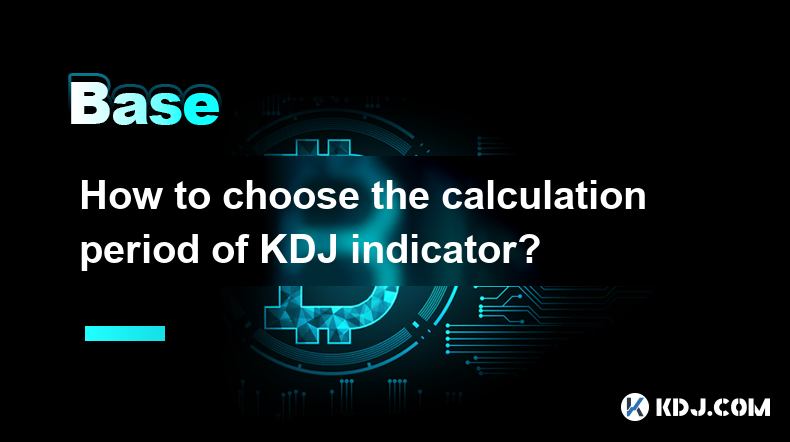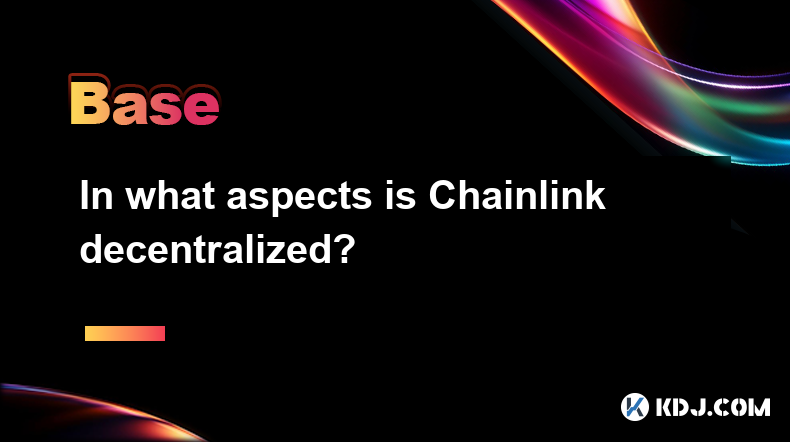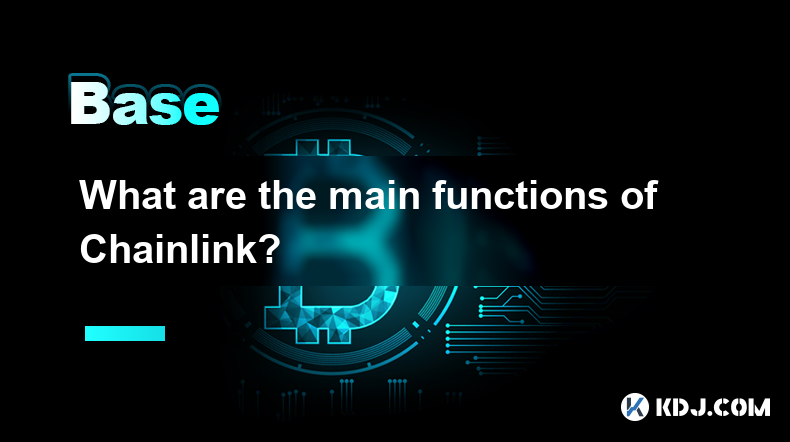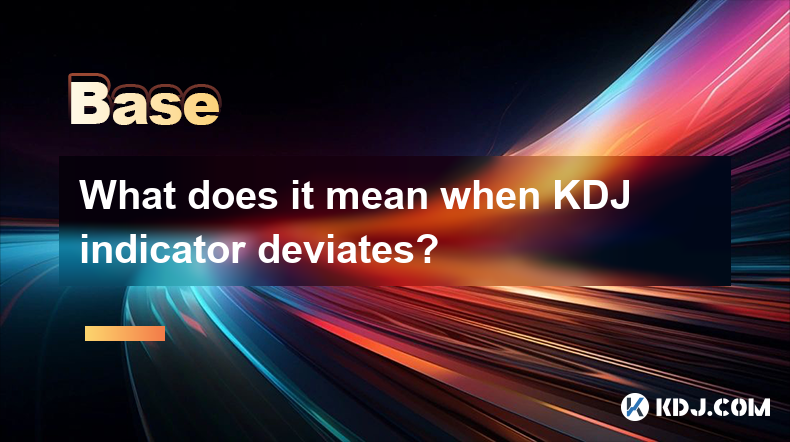-
 Bitcoin
Bitcoin $83,313.6693
-1.61% -
 Ethereum
Ethereum $1,824.6416
-3.06% -
 Tether USDt
Tether USDt $0.9999
0.00% -
 XRP
XRP $2.0615
-1.92% -
 BNB
BNB $601.0287
-0.09% -
 Solana
Solana $119.7880
-4.08% -
 USDC
USDC $0.9999
-0.01% -
 Dogecoin
Dogecoin $0.1661
-3.40% -
 Cardano
Cardano $0.6510
-3.65% -
 TRON
TRON $0.2380
-0.22% -
 Toncoin
Toncoin $3.7959
-5.14% -
 UNUS SED LEO
UNUS SED LEO $9.3951
-0.16% -
 Chainlink
Chainlink $13.1588
-4.27% -
 Stellar
Stellar $0.2636
-1.98% -
 Sui
Sui $2.4047
1.82% -
 Avalanche
Avalanche $18.6850
-3.03% -
 Shiba Inu
Shiba Inu $0.0...01235
-0.22% -
 Hedera
Hedera $0.1650
-0.75% -
 Polkadot
Polkadot $4.0373
-1.82% -
 Litecoin
Litecoin $83.5682
0.58% -
 MANTRA
MANTRA $6.4443
3.75% -
 Bitcoin Cash
Bitcoin Cash $303.2630
-0.75% -
 Bitget Token
Bitget Token $4.5497
-1.20% -
 Dai
Dai $1.0000
0.00% -
 Ethena USDe
Ethena USDe $0.9998
-0.01% -
 Pi
Pi $0.6605
-4.81% -
 Hyperliquid
Hyperliquid $12.4411
-6.29% -
 Monero
Monero $216.2784
-1.00% -
 Uniswap
Uniswap $6.0092
-2.13% -
 Aptos
Aptos $5.2761
-0.41%
How to choose the calculation period of KDJ indicator?
The KDJ indicator's calculation period should be chosen based on trading style, market volatility, and timeframe, with shorter periods for short-term trading and longer for long-term investing.
Apr 02, 2025 at 01:00 pm

The KDJ indicator, also known as the Stochastic Oscillator, is a popular technical analysis tool used by cryptocurrency traders to identify potential buy and sell signals. The calculation period of the KDJ indicator is crucial in determining its effectiveness in predicting market trends. In this article, we will explore the factors to consider when choosing the calculation period of the KDJ indicator and provide guidance on selecting the most suitable period for your trading strategy.
When choosing the calculation period of the KDJ indicator, it is essential to consider your trading style and the timeframe you are analyzing. Shorter calculation periods, such as 9 or 14, are more suitable for short-term traders who focus on intraday or swing trading. These periods provide more sensitive signals that can help identify short-term market fluctuations. On the other hand, longer calculation periods, such as 21 or 28, are better suited for long-term investors who aim to capture broader market trends.
Factors to Consider When Choosing the Calculation Period
Volatility of the Cryptocurrency Market: The cryptocurrency market is known for its high volatility, which can significantly impact the effectiveness of the KDJ indicator. In highly volatile markets, shorter calculation periods may generate more false signals, while longer periods may be more reliable. Consider the volatility of the specific cryptocurrency you are trading and adjust the calculation period accordingly.
Timeframe of Your Analysis: The timeframe you are analyzing plays a crucial role in determining the appropriate calculation period. If you are analyzing a 1-hour chart, a shorter calculation period, such as 9 or 14, may be more suitable. However, if you are analyzing a daily or weekly chart, a longer calculation period, such as 21 or 28, may provide more accurate signals.
Your Trading Strategy: Your trading strategy should also influence your choice of calculation period. If you are a scalper who aims to profit from small price movements, a shorter calculation period may be more appropriate. Conversely, if you are a trend follower who seeks to capture larger market trends, a longer calculation period may be more effective.
Common Calculation Periods and Their Applications
9-Period KDJ: The 9-period KDJ is one of the most commonly used calculation periods, particularly among short-term traders. It is highly sensitive to price movements and can generate frequent buy and sell signals. This period is suitable for intraday trading and can help identify short-term overbought and oversold conditions.
14-Period KDJ: The 14-period KDJ is another popular choice among traders, as it strikes a balance between sensitivity and reliability. It is less prone to generating false signals compared to the 9-period KDJ but still provides timely signals for short-term trading. This period is suitable for swing trading and can help identify potential trend reversals.
21-Period KDJ: The 21-period KDJ is often used by traders who focus on medium-term trends. It is less sensitive to short-term price fluctuations and can help identify more significant market movements. This period is suitable for position trading and can help confirm longer-term trend changes.
28-Period KDJ: The 28-period KDJ is commonly used by long-term investors who aim to capture broader market trends. It is the least sensitive to short-term price movements and can help identify major trend reversals. This period is suitable for long-term investing and can help confirm significant market shifts.
Adjusting the Calculation Period Based on Market Conditions
The cryptocurrency market is dynamic, and market conditions can change rapidly. As a result, it is essential to be flexible and adjust the calculation period of the KDJ indicator based on the current market environment. Here are some tips for adjusting the calculation period:
During High Volatility: In periods of high volatility, consider using a longer calculation period to reduce the number of false signals generated by the KDJ indicator. A longer period can help filter out short-term noise and provide more reliable signals.
During Low Volatility: In periods of low volatility, a shorter calculation period may be more effective in identifying potential trading opportunities. A shorter period can help detect subtle price movements and generate timely signals in a less volatile market.
During Trending Markets: In trending markets, consider using a longer calculation period to capture the overall trend direction. A longer period can help confirm the strength of the trend and reduce the likelihood of being whipsawed by short-term price fluctuations.
During Range-Bound Markets: In range-bound markets, a shorter calculation period may be more suitable for identifying potential breakouts or breakdowns. A shorter period can help detect early signs of a potential trend change and provide timely entry and exit signals.
Combining the KDJ Indicator with Other Technical Analysis Tools
While the KDJ indicator can be a powerful tool on its own, combining it with other technical analysis tools can enhance its effectiveness and provide more comprehensive market insights. Here are some popular technical indicators that can be used in conjunction with the KDJ indicator:
Moving Averages: Combining the KDJ indicator with moving averages can help confirm trend direction and identify potential support and resistance levels. For example, a bullish crossover of the KDJ lines above a rising moving average can signal a strong buy opportunity.
Relative Strength Index (RSI): The RSI is another popular momentum indicator that can be used alongside the KDJ indicator. When both indicators generate overbought or oversold signals simultaneously, it can provide a stronger indication of a potential trend reversal.
Bollinger Bands: Bollinger Bands can help identify potential breakouts and breakdowns when used in conjunction with the KDJ indicator. A KDJ buy signal near the lower Bollinger Band can indicate a potential bullish breakout, while a KDJ sell signal near the upper Bollinger Band can suggest a potential bearish breakdown.
Volume Indicators: Volume indicators, such as the On-Balance Volume (OBV) or the Volume Weighted Average Price (VWAP), can help confirm the strength of KDJ signals. A KDJ buy signal accompanied by increasing volume can indicate strong buying pressure, while a KDJ sell signal with decreasing volume may suggest weak selling pressure.
Backtesting and Optimizing the KDJ Indicator
To ensure the effectiveness of the KDJ indicator with your chosen calculation period, it is crucial to backtest and optimize your trading strategy. Backtesting involves applying your trading rules to historical data to assess the performance of your strategy. Here are some steps to backtest and optimize the KDJ indicator:
Select a Historical Data Set: Choose a reliable source of historical cryptocurrency data that covers a sufficient period to test your strategy. Ensure that the data includes the necessary price and volume information required for the KDJ indicator.
Define Your Trading Rules: Clearly define your entry and exit rules based on the KDJ indicator signals. For example, you may enter a long position when the K line crosses above the D line and both lines are below 20, and exit the position when the K line crosses below the D line and both lines are above 80.
Apply the KDJ Indicator: Apply the KDJ indicator with your chosen calculation period to the historical data set. Record the buy and sell signals generated by the indicator based on your trading rules.
Analyze the Results: Evaluate the performance of your trading strategy by analyzing key metrics such as the win rate, average profit per trade, and maximum drawdown. Compare the results of different calculation periods to determine which one yields the best performance for your strategy.
Optimize the Calculation Period: Based on the backtesting results, optimize the calculation period of the KDJ indicator to improve the performance of your trading strategy. You may need to test multiple periods and adjust other parameters, such as the overbought and oversold levels, to find the optimal settings for your strategy.
Common Questions Related to Choosing the Calculation Period of the KDJ Indicator
Q: What is the most common calculation period for the KDJ indicator in cryptocurrency trading?
A: The most common calculation periods for the KDJ indicator in cryptocurrency trading are 9, 14, 21, and 28. The 9-period and 14-period KDJ are popular among short-term traders, while the 21-period and 28-period KDJ are often used by medium-term and long-term traders, respectively.
Q: How does the calculation period of the KDJ indicator affect its sensitivity to price movements?
A: The calculation period of the KDJ indicator directly impacts its sensitivity to price movements. Shorter calculation periods, such as 9 or 14, make the indicator more sensitive to short-term price fluctuations, generating more frequent buy and sell signals. Longer calculation periods, such as 21 or 28, make the indicator less sensitive to short-term price movements and more focused on capturing broader market trends.
Q: Can the calculation period of the KDJ indicator be adjusted based on market conditions?
A: Yes, the calculation period of the KDJ indicator can and should be adjusted based on market conditions. During periods of high volatility, a longer calculation period may be more effective in reducing false signals. In low volatility environments, a shorter calculation period can help identify subtle price movements. Additionally, the calculation period can be adjusted based on whether the market is trending or range-bound.
Q: Is it necessary to combine the KDJ indicator with other technical analysis tools?
A: While the KDJ indicator can be used as a standalone tool, combining it with other technical analysis tools can enhance its effectiveness and provide more comprehensive market insights. Popular indicators to use alongside the KDJ include moving averages, the Relative Strength Index (RSI), Bollinger Bands, and volume indicators. These additional tools can help confirm KDJ signals and provide a more robust trading strategy.
Q: How can I determine the optimal calculation period for the KDJ indicator in my trading strategy?
A: To determine the optimal calculation period for the KDJ indicator, you should backtest your trading strategy using historical data. Apply the KDJ indicator with different calculation periods and analyze the performance of your strategy based on key metrics such as win rate, average profit per trade, and maximum drawdown. Compare the results of different calculation periods and optimize your strategy by selecting the period that yields the best performance for your specific trading approach.
Disclaimer:info@kdj.com
The information provided is not trading advice. kdj.com does not assume any responsibility for any investments made based on the information provided in this article. Cryptocurrencies are highly volatile and it is highly recommended that you invest with caution after thorough research!
If you believe that the content used on this website infringes your copyright, please contact us immediately (info@kdj.com) and we will delete it promptly.
- Looking Past the Plateau: Where the Momentum Is Now
- 2025-04-03 12:15:13
- Coincodex's machine learning algorithm predicts Dogecoin (DOGE) price surge to $0.57
- 2025-04-03 12:15:13
- Pi Network (PI) Price Drops 20% as Investors Call for Leadership Changes
- 2025-04-03 12:10:13
- BlockDAG's Beta Testnet Ignites Real Adoption While ADA Eyes $0.85 and Ripple Slashes SEC Fine
- 2025-04-03 12:10:12
- Meme-powered tokens like Official Trump and Bonk have lost their steam
- 2025-04-03 12:05:13
- VanEck Launches a New Financial Product Tied to Celestia's (TIA) Blockchain
- 2025-04-03 12:05:13
Related knowledge

In what aspects is Chainlink decentralized?
Apr 02,2025 at 05:49pm
Chainlink is a decentralized oracle network that plays a crucial role in connecting smart contracts on blockchain networks with real-world data. Its decentralization is reflected in multiple aspects, ensuring the network's security, reliability, and integrity. This article delves into the various ways Chainlink achieves decentralization, including its n...

How does Chainlink connect smart contracts with real-world data?
Apr 02,2025 at 03:56pm
Chainlink is a decentralized oracle network that plays a crucial role in connecting smart contracts on blockchain platforms with real-world data. Smart contracts are self-executing contracts with the terms of the agreement directly written into code, but they can only interact with on-chain data. To access real-world data, such as stock prices, weather ...

What are the main functions of Chainlink?
Apr 02,2025 at 11:49pm
Chainlink is a decentralized oracle network that plays a crucial role in connecting smart contracts with real-world data and external APIs. The primary function of Chainlink is to facilitate the seamless integration of off-chain data into on-chain smart contracts, enabling them to execute based on real-world events and information. This integration is v...

How does Chainlink work?
Apr 03,2025 at 01:50am
Chainlink is a decentralized oracle network that connects smart contracts with real-world data and external APIs. It plays a crucial role in the blockchain ecosystem by enabling smart contracts to interact with data outside their native blockchain environment. This connectivity is essential for smart contracts to execute based on real-world events and d...

How to choose the calculation period of KDJ indicator?
Apr 02,2025 at 01:00pm
The KDJ indicator, also known as the Stochastic Oscillator, is a popular technical analysis tool used by cryptocurrency traders to identify potential buy and sell signals. The calculation period of the KDJ indicator is crucial in determining its effectiveness in predicting market trends. In this article, we will explore the factors to consider when choo...

What does it mean when KDJ indicator deviates?
Apr 01,2025 at 03:08pm
The KDJ indicator, also known as the Stochastic Oscillator, is a popular technical analysis tool used in the cryptocurrency market to predict price movements. When the KDJ indicator deviates, it means that the current price of a cryptocurrency is moving away from its typical range, as indicated by the KDJ lines. This deviation can signal potential trend...

In what aspects is Chainlink decentralized?
Apr 02,2025 at 05:49pm
Chainlink is a decentralized oracle network that plays a crucial role in connecting smart contracts on blockchain networks with real-world data. Its decentralization is reflected in multiple aspects, ensuring the network's security, reliability, and integrity. This article delves into the various ways Chainlink achieves decentralization, including its n...

How does Chainlink connect smart contracts with real-world data?
Apr 02,2025 at 03:56pm
Chainlink is a decentralized oracle network that plays a crucial role in connecting smart contracts on blockchain platforms with real-world data. Smart contracts are self-executing contracts with the terms of the agreement directly written into code, but they can only interact with on-chain data. To access real-world data, such as stock prices, weather ...

What are the main functions of Chainlink?
Apr 02,2025 at 11:49pm
Chainlink is a decentralized oracle network that plays a crucial role in connecting smart contracts with real-world data and external APIs. The primary function of Chainlink is to facilitate the seamless integration of off-chain data into on-chain smart contracts, enabling them to execute based on real-world events and information. This integration is v...

How does Chainlink work?
Apr 03,2025 at 01:50am
Chainlink is a decentralized oracle network that connects smart contracts with real-world data and external APIs. It plays a crucial role in the blockchain ecosystem by enabling smart contracts to interact with data outside their native blockchain environment. This connectivity is essential for smart contracts to execute based on real-world events and d...

How to choose the calculation period of KDJ indicator?
Apr 02,2025 at 01:00pm
The KDJ indicator, also known as the Stochastic Oscillator, is a popular technical analysis tool used by cryptocurrency traders to identify potential buy and sell signals. The calculation period of the KDJ indicator is crucial in determining its effectiveness in predicting market trends. In this article, we will explore the factors to consider when choo...

What does it mean when KDJ indicator deviates?
Apr 01,2025 at 03:08pm
The KDJ indicator, also known as the Stochastic Oscillator, is a popular technical analysis tool used in the cryptocurrency market to predict price movements. When the KDJ indicator deviates, it means that the current price of a cryptocurrency is moving away from its typical range, as indicated by the KDJ lines. This deviation can signal potential trend...
See all articles
























































































